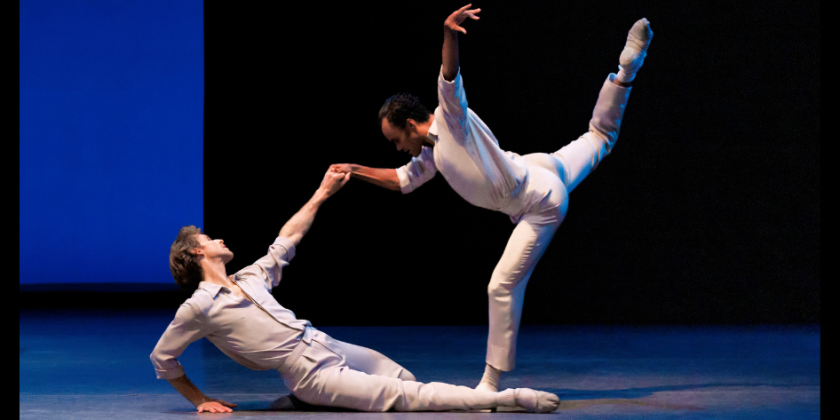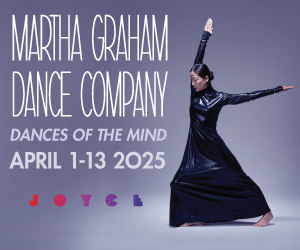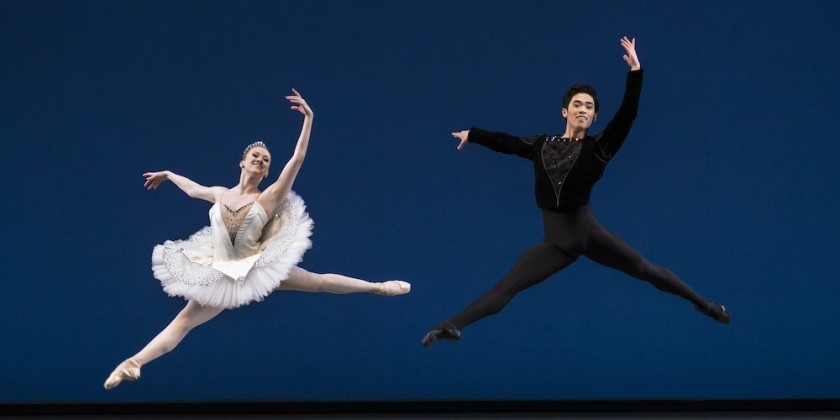IMPRESSIONS: New York City Ballet's 2024 Fall Season “Eclectic NYCB”

David H. Koch Theater, Lincoln Center for the Performing Arts
Saturday evening, September 21 + Sunday afternoon, September 22, 2024
Divertimento from Le Baiser de la Fée
Music: Igor Stravinsky / Choreography: George Balanchine
Each In Their Own Time
Music: Johannes Brahms (pianist: Susan Walters) / Choreography: Lar Lubovitch
This Bitter Earth
Music: Max Richter and Clyde Otis / Choreography: Christopher Wheeldon
The Four Seasons
Music: Giuseppe Verdi / Choreography: Jerome Robbins
Conductor: Andrew Litton
Works by four different choreographers make up the “eclectic” program at the New York City Ballet this fall season. Different casts for a couple of the pieces add further heterogeneity. Variety truly is the spice of life.
Seeing a dancer debut in a role can be an exciting discovery. Comparing a dancer’s first performance to another artist’s seasoned take might not always seem fair. But, in the end, different interpretations serve the work and let an audience embrace the ephemeral nature of the art form.

In George Balanchine’s Divertimento from Le Baiser de la Fée, which opens the program on Saturday evening, Indiana Woodward and David Gabriel try on the principal roles for size. They fit. Woodward appealingly juxtaposes grand-scale dancing and romantic intimacy, and Gabriel works with such dedication that I experience every single step with him from my seat. While insecure in his partnering, he radiates an immediacy that I find beguiling. Gabriel is on high alert, and his laser-sharp focus transmits beyond the footlights. Has he mastered the role? I realize that he hasn’t yet, when I see Anthony Huxley the following afternoon. Huxley soars as light as a butterfly, hovers like a hummingbird, and displays a charming, princely demeanor all the while he seems devoted to Megan Fairchild. She can count on him each step of the way, but gives the appearance that, while she enjoys his attention, she doesn’t depend on it. Huxley does not need to work through the choreography; he sails above it and his mastery astonishes. Yet, Gabriel’s unadorned process might be just as exhilarating.
With Joseph Gordon sidelined by a knee injury and not available for the season, Taylor Stanley gets to step into Gordon’s role in Lar Lubovitch’s male pas de deux Each In Their Own Time. He appears alongside Adrian Danchig-Waring, who originated the work three years ago at New York City Center’s Fall for Dance Festival. Pianist Susan Walters, also part of the original cast, plays selections from "Brahms’ Eight Piano Pieces (Op 76)". Danchig-Waring and Stanley stand on either side of the piano and listen intently to Walters before they take their first steps. Soon their arms join in seamless decorative movement patterns reminiscent of Lubovitch’s male duet from his 1985 Concerto Six Twenty-Two.

I ask myself if they might use the same white costumes, since the program does not credit a designer. Circular motifs repeat in gesture and figure as well as in floor arrangements. Painfully pretty, the piece is saved by its masterful performers. Danchig-Waring makes me believe in a purpose behind the work’s ornate façade, and the atmospheric lighting by Jack Mehler hints that there might be more to this dance than my eyes can see.
Sara Mearns and Tyler Angle are by now veterans of the company and know Christopher Wheeldon’s This Bitter Earth inside out. Mearns trusts Angle fully and occasionally releases her often uprightly held neck to the side. This relaxation seems to provide an opening for communication between the two dancers. It elevates the work, and allows performers and audience members to breathe. Reid Bartelme’s spare but effective costumes, and lighting by Mary Louise Geiger complete the work. Angle is the partner dreams are made of.

Jerome Robbins’s feel-good The Four Seasons makes me smile from ear to ear each time I see it. After a preposterous opening scene in which handsome Samuel Melnikov as Janus sends the four seasons on their way to start another year, the cycle begins with a frigid Winter in which dancers obviously feel the cold. Not allowed to join the group, Erica Pereira is left to freeze outside the circle of camaraderie. That gives her the opportunity to ham it up with Devin Alberda and Andres Zuniga as they go dashing through imaginary snow. If Pereira’s performance on Saturday evening focuses on acting, Emma von Enck convincingly tells the story through crisp, clipped movement phrasing on Sunday afternoon.
Different partners can affect a dancer’s performance. Chun Wai Chan seems unfazed by his assignment in the Spring section, while Ashley Laracey performs Summer with a completely altered attitude depending on her counterpart.
Olivia MacKinnon replaces Isabella LaFreniere on short notice in Saturday’s Spring and gives a joyful reading. Indiana Woodward on Sunday allows herself a bit more risk, and the sudden directional changes remind me how exciting the role once was. Chan dances dependably and cocksure, but somehow seems too calculating for that season of the year. The best part of Spring now happens to be the four guys who jump and spin in always new groupings with timing that is close to what the choreography requires. Robbins’ meticulous showmanship still delights, and Christopher Grant, Kennard Henson, Spartak Hoxha, and Jules Mabe certainly look like as if they are having a blast.

Saturday’s Summer sizzles as Laracey emulates the timing of her hot and ever so dreamily bothered partner, Davide Riccardo, who debuts in the role and makes it his. Not since Stephanie Saland, the role’s originator, have I seen such an innate languor. When Riccardo’s knee buckles in the midday heat, the drop of his hip takes the spectator south of any border; but the best is yet to come. Am I imagining a sigh, before he collects the energy to straighten his leg again? Riccardo then places his hip back on top of his leg sequentially. A minimalist seat wave performed to maximum effect surely makes the temperature rise. Laracey and the six women in this harem do well to follow Riccardo’s inspired imagination.
Sunday’s Summer, however, takes place in sweater weather. Stately Aaron Sanz displays beautiful lines, and Laracey shows that she can do that, too. In this performance she replaces another dancer, but with enough notice that her name makes it into the printed program. While being able to yield to a dance partner truly is a special quality, I wonder if Laracey will ever take the lead in an onstage partnership.

Before the colorful full-cast finale, Fall whirls across the stage. Unity Phelan is in secure hands with Andrew Veyette, who displays fine form. The two do look good together, and KJ Takahashi as a particularly sprightly Faun rounds out a pleasant picture. Phelan replaces Tiler Peck on Sunday, and pairs up with Roman Mejia. Even if minor mishaps creep into the partnering, it’s a joy to see the relatively short-statured Mejia work hard to maneuver the tallish Phelan. I get to see the mechanics of the choreography, and admire the alertness and care Mejia puts into the moments with Phelan.
In his solo parts, however, Mejia unleashes a storm of giant magnitude, and brings the house down. High jumps, multiple turns, and a superstar temperament are a tough act to follow, but Phelan manages admirably. David Gabriel adds a gentle flair to this bacchanale as Sunday’s Faun, proving that he already is at home in a demi-caractère world. After having seen him in Le Baiser de la Fée, I look forward to watching Gabriel in all kind of roles in the future.













